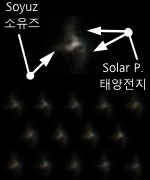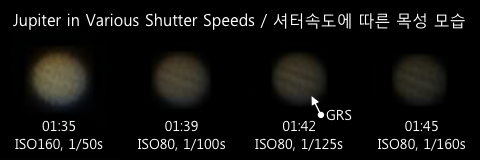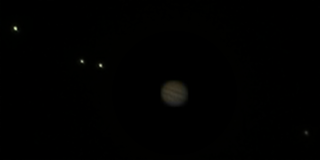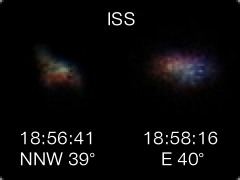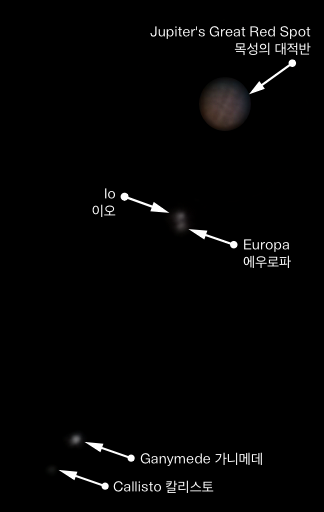ISS overhead approach
Posted by Wesley on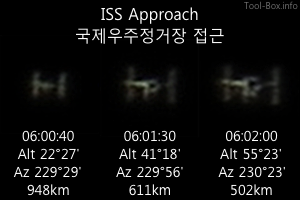
ISS gets bigger as it rises overhead
Just a day after successful testing of the iPhone-based tracker, ISS made a nearly direct overhead approach in the sky as seen from my house. This would provide an excellent opportunity to take biggest shots of the station because it would be at the shortest distance from the observer when it's directly overhead.

ISS incoming
This is the first time I could properly see the full spread of ISS in my photos - the solar panels and the main modules of the station in the iconic H shape configuration are clear and large, especially when it was only about 500km away. I'm frankly amazed that a point-and-shoot bridge camera could photograph a satellite this well even under ideal circumstances. We live in amazing times.
Settings: 1200mm (2x enlarged) - ISO 80 - 1/640s
Photos: 13 frames / 9 frames / 8 frames stacked using RegiStax 6.1.0.8
Time: 2013-11-12 06:00 - 06:02 KST
Location: Suwon, Korea
